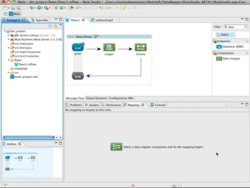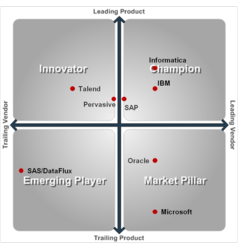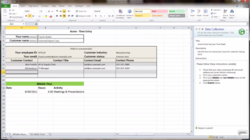
Palo Alto, CA (PRWEB) June 28, 2012
Fiorano Software (http://www.fiorano.com), a leader in enterprise integration and messaging middleware solutions, announced today that it has been positioned in the Visionary Quadrant in Gartner, Inc.’s recently released research paper “Magic Quadrant for Application Infrastructure for Systematic Application Integration Projects.”
The report examines vendors whose products address the needs of systematic application-to-application (A2A), business-to-business (B2B) and cloud-to-on-premises application integration. Fioranos SOA Platform, Enterprise Service Bus (Fiorano ESB), Cloud platform (Fiorano Cloud), messaging software (FioranoMQ) and related application adapters were evaluated in this Magic Quadrant.
The exit of several vendors from the middleware business leaves Fiorano as the only vendor that has been featured in the Visionary Quadrant in this category for 9 straight years now; this makes it one of the most consistent innovators in the business.
Fiorano is the only vendor with both, application and distributed system integration capabilities and a unified approach toward hybrid deployments of cloud and on-premise applications, said Atul Saini, CEO of Fiorano Software. Fiorano is also the only vendor with a cohesive product set in contrast to the mega-vendors who have challenges with product rationalization and incompatibility issues with myriad products that they have acquired through take-overs. We are committed to maintaining our lead with continuous innovation in our products and their features, he added.
Explaining technology shifts, the Gartner report states: Historically, B2B and A2A integrations have been considered separate practices conducted by separate groups. However, at the technology level, B2B integration technology has much in common with middleware for A2A integration, including communication, transformation, adapters and orchestration features. For this reason, organizations are moving toward establishing best practices that create a unified approach for A2A and B2B integration.
The Quadrant shortlisted 27 vendors last year but has only 17 vendors this year, with a dozen vendors dropped for reasons such as lack of geographic coverage, lack of market penetration or becoming the subject of a merger or acquisition.
About the Gartner Magic Quadrant:
The Magic Quadrant by Gartner, Inc. (http://www.gartner.com) is a graphical representation of a marketplace at and for a specific time period. It depicts Gartner’s analysis of how certain vendors measure against criteria for that marketplace. Gartner does not endorse any vendor, product or service depicted in the Magic Quadrant. The Magic Quadrant is intended solely as a research tool, and is not meant to be a specific guide to action. This report may be purchased from Gartner directly, Research Paper ID Number: G00233004. Gartner disclaims all warranties as to the accuracy, completeness or adequacy of such information.
About Fiorano:
Founded in 1995, Silicon Valley based Fiorano is a USA, California Corporation with proven leadership in enterprise middleware and peer-to-peer distributed systems. Fiorano’s innovative event-driven SOA platform integrates applications and complex technologies into an enterprise nervous system, increases business process performance, yields higher message throughput and enhances availability through agent-based visual composition that bridges the capability gap between business models and their implementation the model is the application, ready to run.
Global leaders including ABN AMRO, Boeing, British Telecom, Capgemini Telecom, Chicago Mercantile Exchange Group, McKesson, NASA, POSCO Steel, Qwest Communications, Rabobank, Schlumberger, Lockheed Martin, United States Coast Guard and Vodafone have deployed Fiorano to drive innovation through open, standards-based, event-driven SOA applications built in just days, yielding unprecedented productivity.
Fiorano Enterprise Service Bus (ESB) and Fiorano Message Queue (MQ) deliver the industry fastest, lowest latency, highest throughput real-time messaging (asynchronous and synchronous) to power high performance, highly available, and collaborative workflow applications whose application services are distributed throughout the IT landscape. Fiorano Cloud Platform, built on the Fiorano Cloud ESB (Enterprise Service Bus), a Hybrid ESB Platform that integrates applications across SaaS, PaaS and on-premise worlds. Fiorano’s distributed, peer-to-peer agents abstract complexity of developing and deploying services to unlock value in a customer’s enterprise architecture framework.
Media Contact:
Media and Analyst Relations.
Fiorano Software, Inc.
Telephone: +1.408.354.3210
mediarelations(at)fiorano(dot)com
Trademarks:
Fiorano, Fiorano SOA Platform, Fiorano Middleware Platform SOA, Fiorano ESB, Fiorano Cloud Platform, Fiorano Cloud ESB and FioranoMQ are registered trademarks or trademarks of Fiorano Software Inc. and/or its affiliates. All other trademarks are properties of their respective owners.




